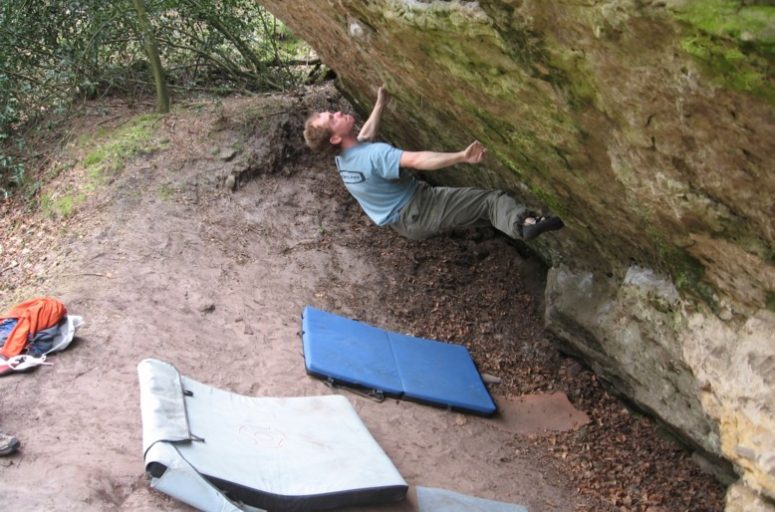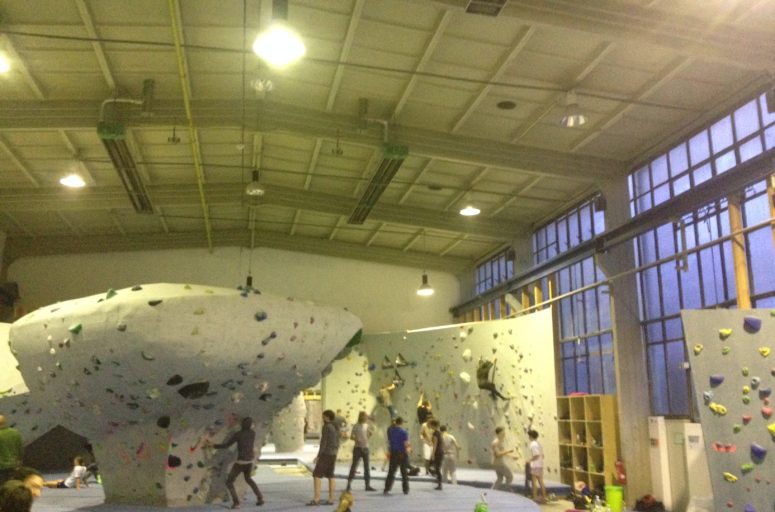Germany – Just a few kilometres per car north of the city Münster lies the beautiful Teutoburger Wald forest. It stretches over many miles of terrain, from Lower Sachsony to North-Rhine-Westphalia state, and is home to plenty of outdoor sports such as hiking and mountain biking. It also attracts many tourists and weekend walkers who take advantage of the limitless amounts of trails that the forest has to offer. As luck would have it, the forest is also home to a number of great climbing routes and some fantastic boulder problems.
The Dörenther Klippen area can be found between the towns of Dörenthe and Ibbenbüren. It contains 15 sectors with over 100 routes. Parking can be found along the B219 and K24 allowing access from both sides of the area. Hidden well between the plethora of paths are a few select sandstone rock formations waiting to be climbed. A large amount of the fragile eco-system is under the country’s nature conservation program, so all visitors, not just climbers, should definitely take care when entering any of the areas. It goes without saying, just as in all climbing locations, that waste should not be left behind and that the environment should be treated with respect.
There is a topograph for the area and it is advisable to get your hands on it as finding the routes and navigating through the woods can be quite confusing (Lüke & Schepers, “Rocks Along the way of old Hermann”). Teuto is home to some very interesting greenish sandstone which, under the right conditions offers excellent grip and friction. For beginners the forest offers a very good starting point for learning the ropes (pardon the pun) to leading outside. Sectors such as “Hockendes Weib” and “Dreikaiserstuhl” are perfect for this. There are plenty of easy and interesting routes in the lower grades, from easy-going UIAA 6s to harder 7s for the more ambitious lead climber. Hard movers may, however, be disappointed by the lack of tough routes. There are only a handful of climbs in the 8s and 9s but these are worth checking out and can be found in the “Schinder” sector of the “Dreikaiserstuhl”. Banane (8+) and its variant Banane ohne Rampe (10-) are the best test pieces of the forest. Right next to these are Hexe (9-) and Alien (9), two very powerful routes, the latter with a very athletic crux which is tough for the grade.
The area also provides plenty of options for bouldering. Many problems are traverses along the bottom of the climbing routes, some of them defined. Along the path are also free standing blocks which can be bouldered on, but require a keen eye or local knowledge to find. I spent a good deal of my time bouldering here, and there are some real gems to be found far off the beaten paths, combing a mix of powerful roof problems and tricky traverses, from Fb 5a up to 7c.
Because of the forests status as a nature reserve the use of chalk is forbidden in almost all sectors, so one should bring along a small piece of cloth to wipe those sweaty hands. It is also advisable to check the weather forecast before setting out on a trip as the whole region is prone to high levels of precipitation. The rock tends to absorb water which then trickles and seeps out of cracks, sometimes many days after the last rain fall. Hot summers can also be bad with the foliage and underbrush creating a tropical climate of sorts, making climbing neigh impossible under moist and humid conditions.
All in all, the Teutoburger forest offers a suitable alternative to other climbing sites in the near and far vicinity, and definitely has some great routes and a number of fantastic boulder problems. Because of the parks nature reserve status, it hasn’t received much attention from dedicated climbers, which is a shame since it has a lot of potential.


